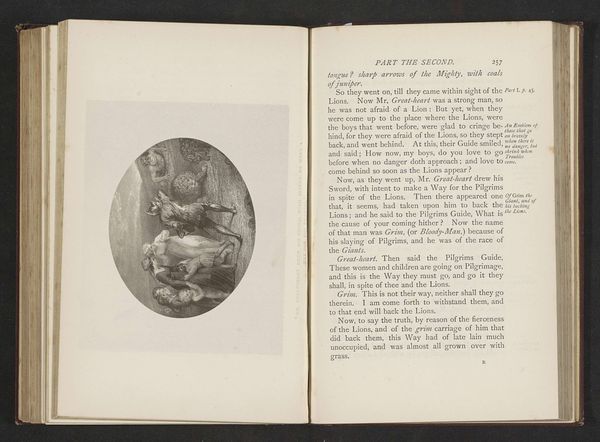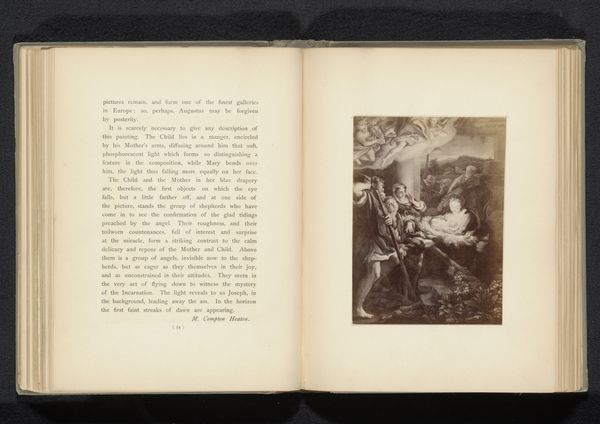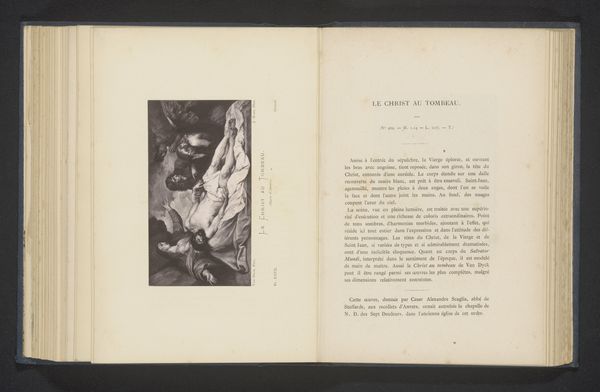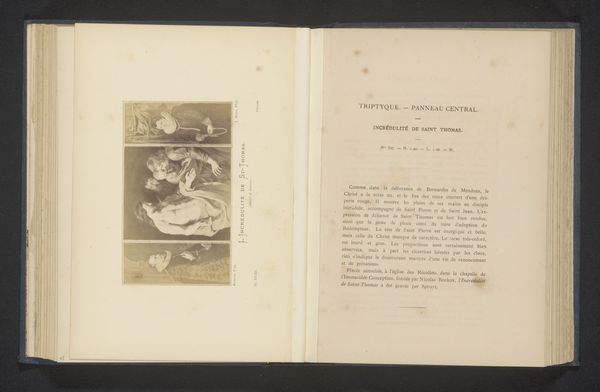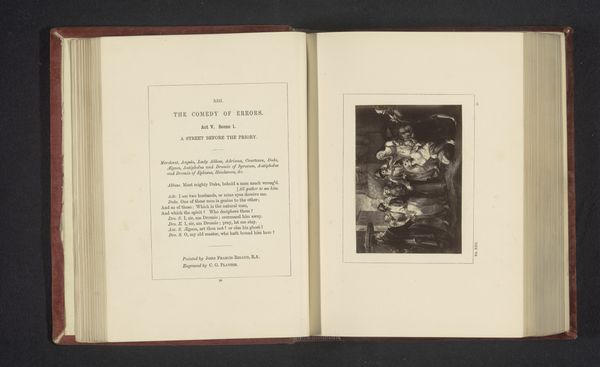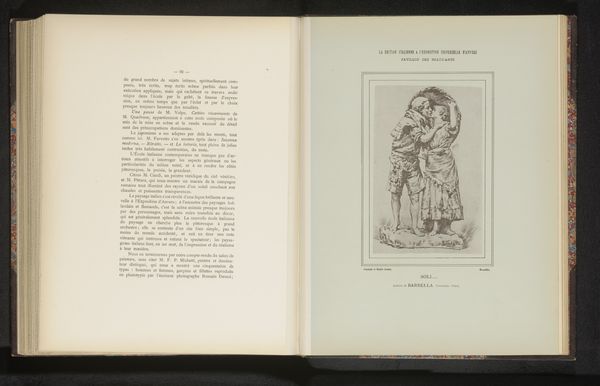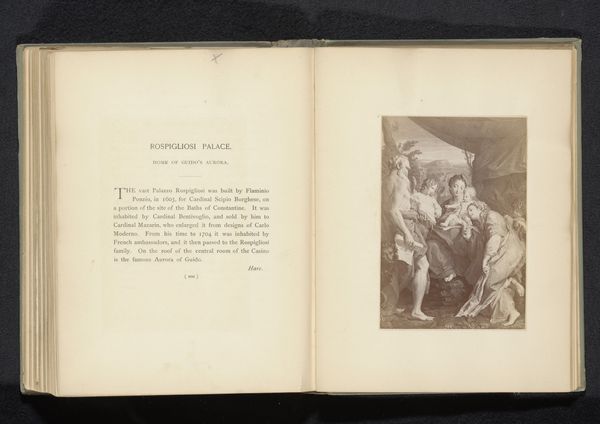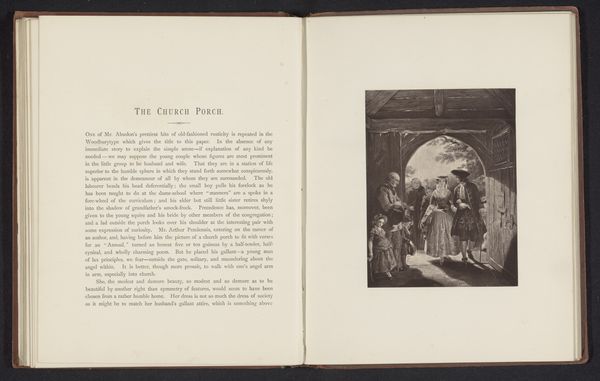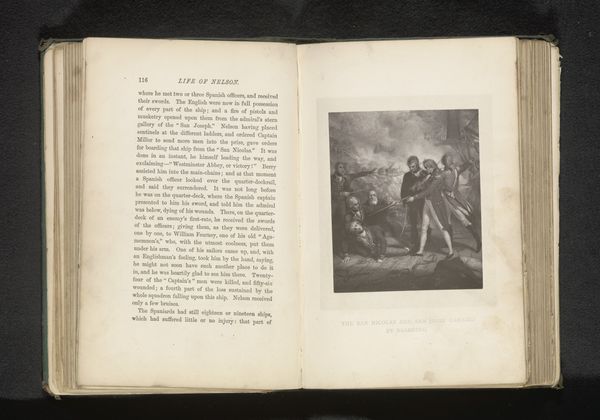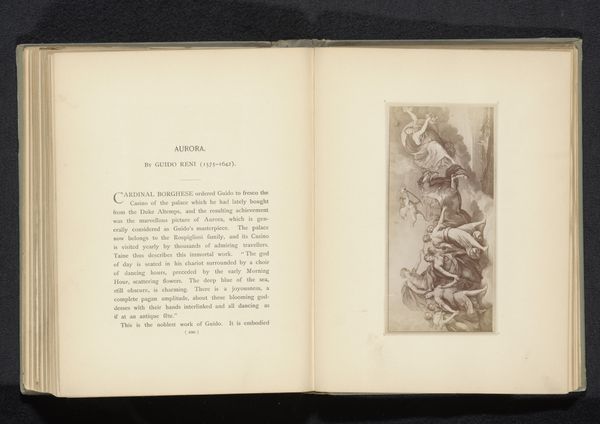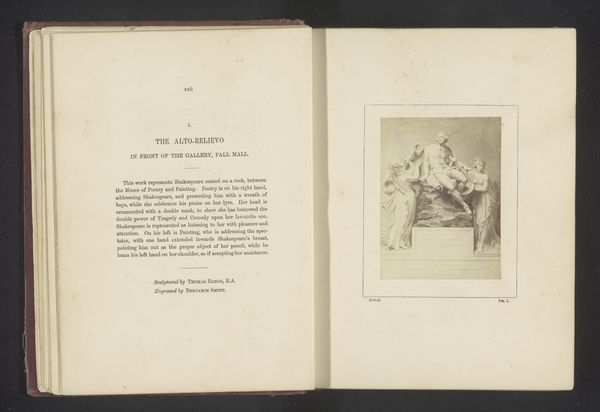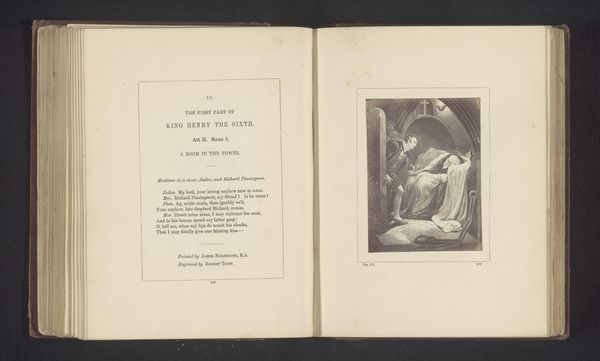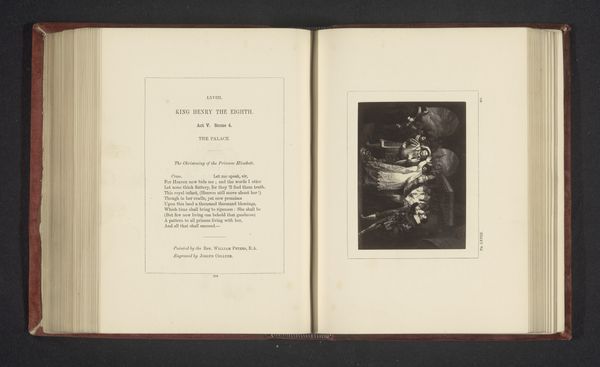
Fotoreproductie van een prent naar het schilderij Maagd op de rotsen before 1887
0:00
0:00
print, photography
# print
#
landscape
#
photography
#
italian-renaissance
Dimensions: height 111 mm, width 73 mm
Copyright: Rijks Museum: Open Domain
Editor: Here we have a photographic reproduction of "The Virgin of the Rocks" by Leonardo da Vinci, created before 1887. It's presented as a print within a book, lending a somewhat scholarly or historical air. What jumps out at me is how the figures seem almost swallowed by the cavernous, rocky setting. How do you interpret that interplay between the figures and their environment? Curator: It's a striking contrast, isn't it? Instead of viewing the landscape as simply a backdrop, consider its active role. Da Vinci was deeply invested in understanding the natural world. We see this interest manifest not merely as an aesthetic setting but as an immersive, almost womb-like space. This refuge, while protective, simultaneously restricts. Think about the implications for the Madonna. Does this geological embrace signify a safe haven, or does it suggest a more complex confinement reflecting patriarchal structures and societal expectations of women during the Renaissance? Editor: That's a perspective I hadn't considered – viewing the landscape as a commentary on societal constraints. I was mainly focused on the pure visual element. Curator: The beauty is inextricably linked to its socio-historical moment. What does it mean for Mary to be so inextricably bound to this place? Are her choices shaped and limited? And who holds the symbolic and literal power to define such boundaries? Analyzing such themes unveils how art both reflects and critiques its time. Editor: This connection to social commentary and women's history provides new tools to examine this Renaissance work. Curator: Precisely. Recognizing such contextual undercurrents moves us toward a richer, more equitable appreciation of art history.
Comments
No comments
Be the first to comment and join the conversation on the ultimate creative platform.
